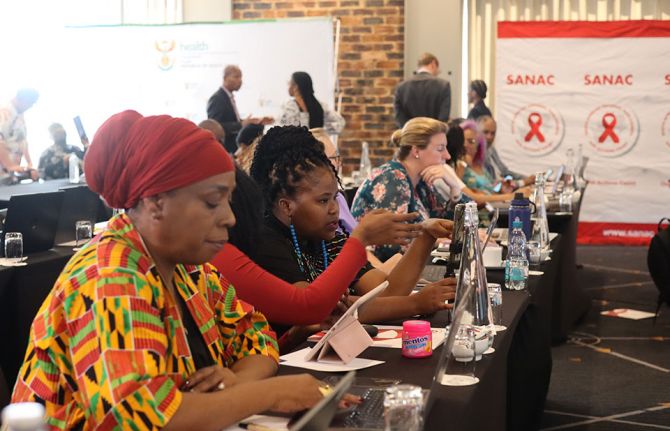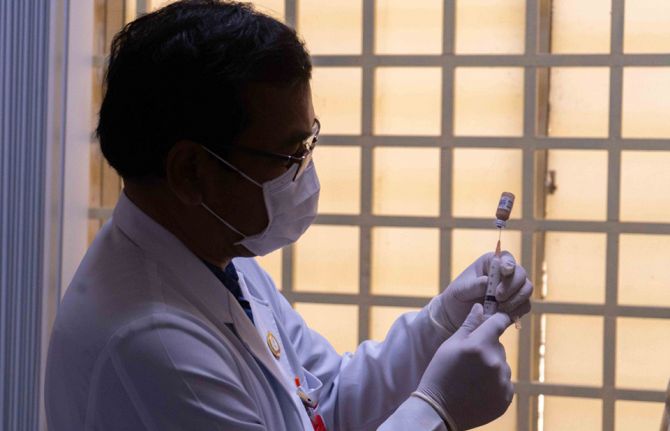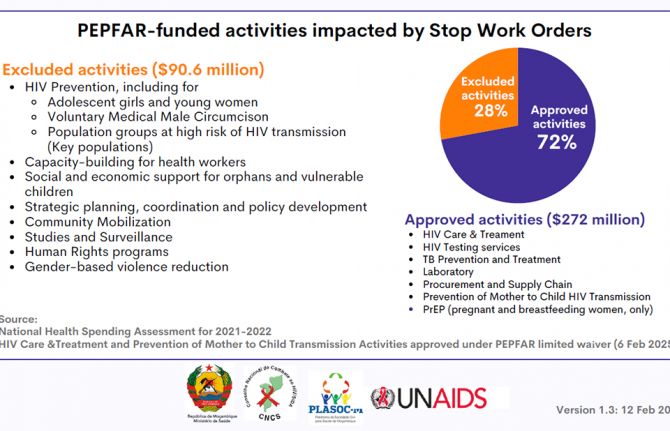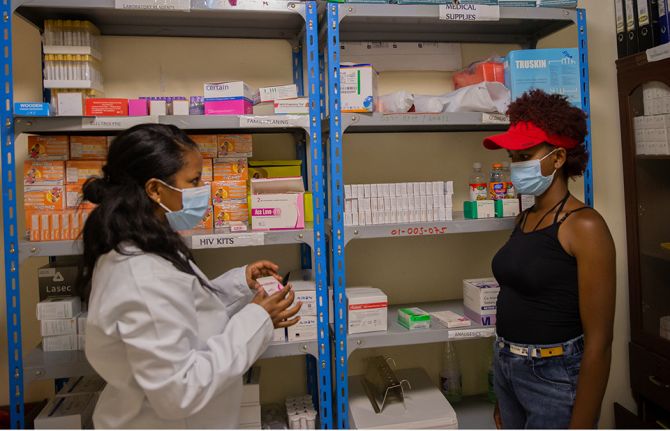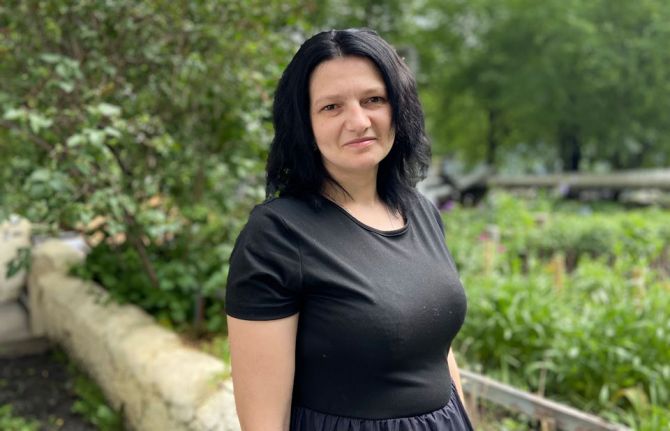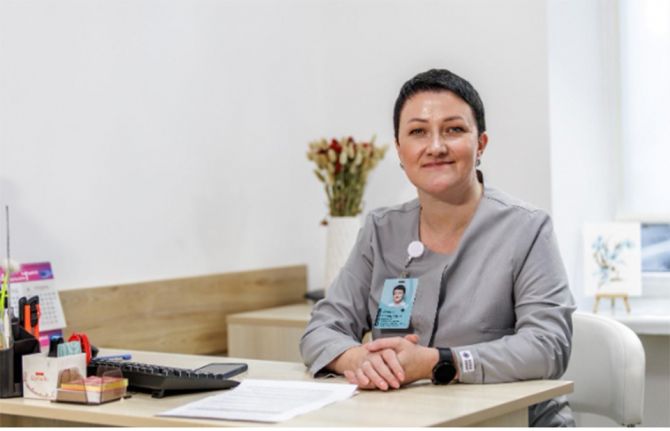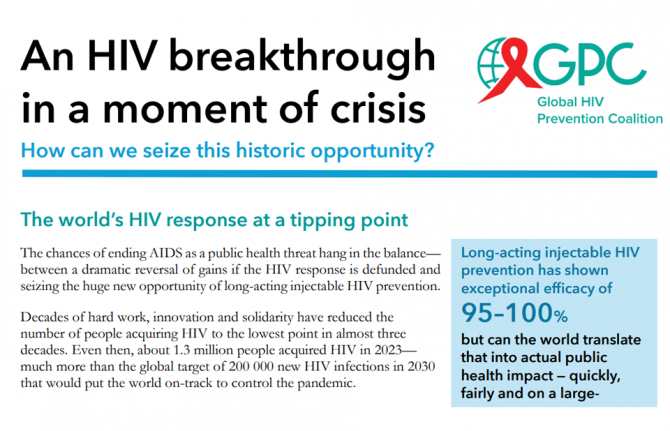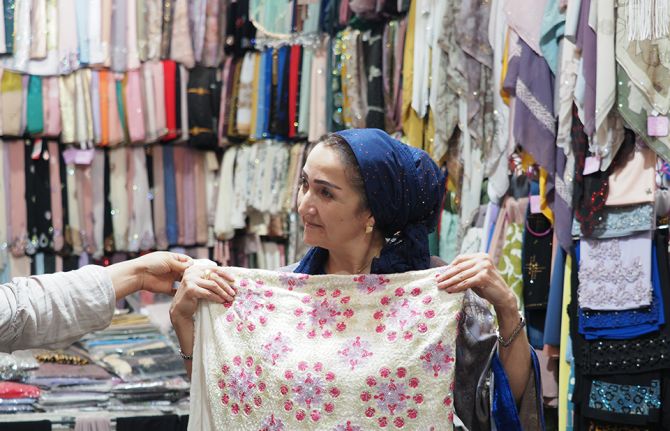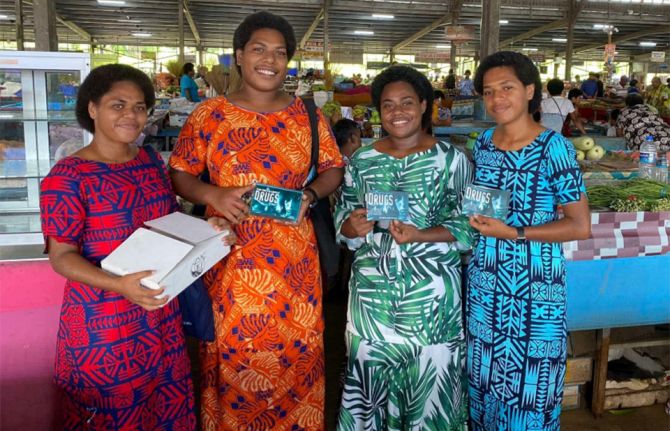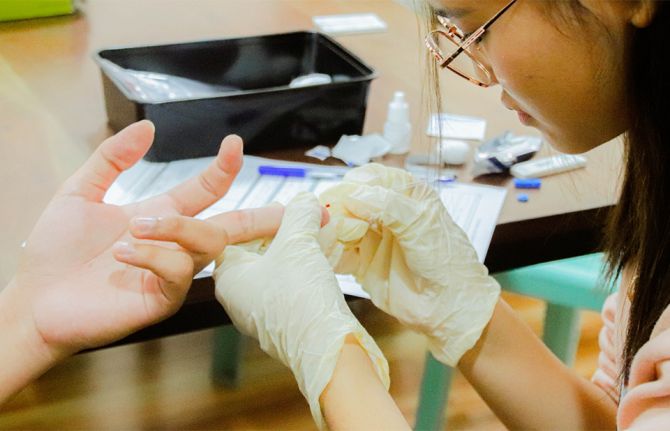
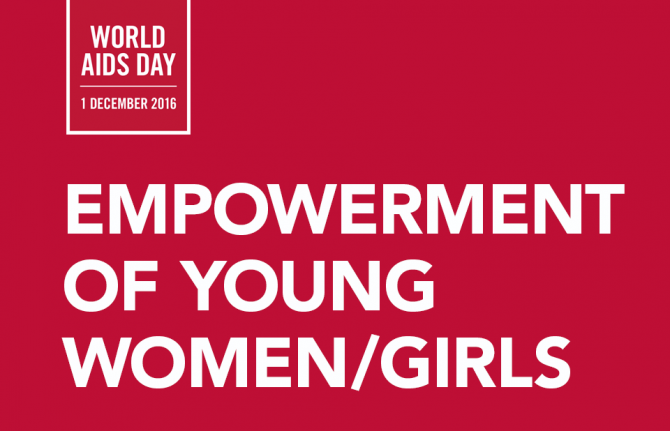
Update
Empowerment of young women and girls
07 November 2016
07 November 2016 07 November 2016Young women aged 15–24 years are at particularly high risk of HIV infection, accounting for 20% of new HIV infections among adults globally in 2015, despite accounting for just 11% of the adult population. In sub-Saharan Africa, young women accounted for 25% of new HIV infections among adults and women accounted for 56% of new HIV infections among adults. Gender inequalities, including gender-based violence, exacerbate women’s and girls’ physiological vulnerability to HIV and block their access to HIV services. Young people are denied the information and the freedom to make free and informed decisions about their sexual health, with most lacking the knowledge required to protect themselves from HIV. The impact of these barriers is strongest in high-prevalence settings, predominantly in eastern and southern Africa.
Hands up for #HIVprevention — World AIDS Day campaign




Update
HIV, HPV and cervical cancer—leveraging synergies to save women’s lives
01 November 2016
01 November 2016 01 November 2016UNAIDS Executive Director Michel Sidibé delivered keynote remarks at the opening of the World Cancer Congress in Paris, France, on 31 October. This year more than 3500 leaders, cancer experts and activists gathered together under the theme “Mobilize action—inspire change”.
Leveraging the experience and innovative activism of more than three decades of the AIDS response, Mr Sidibé called for greater mobilization and the breaking down of silos between programmes and services to deliver comprehensive sexual and reproductive health services for women and girls. He highlighted that the 2016 Political Declaration on Ending AIDS and the UNAIDS 2016–2021 Strategy reflect strong global commitments to scaling up integrated health services to address coinfections and co-morbidities, including the prevention, screening and treatment of sexually transmitted infections and cervical cancer.
In his speech he pointed out that women living with HIV are up to five times more likely to develop cervical cancer than other women. Mr Sidibé stressed that cervical cancer is highly preventable with the human papillomavirus vaccine (HPV) and generally curable if diagnosed and treated early. Despite that, every year 528 000 women are newly diagnosed with cervical cancer and more than 266 000 women die needlessly from the disease, 90% of whom live in low- and-middle-income countries.
Mr Sidibé said that currently only 1 in 10 girls in low- and middle-income countries have access to the HPV vaccine, compared with 9 in 10 girls in high-income countries. This, he said, starkly exposes the links between disease, gender inequality, poverty, lack of rights and poor access to essential health services.
Mr Sidibé congratulated the organizers, the Union for International Cancer Control, la Ligue contre le cancer and Alliance des Ligues Francophones Africaines et Méditerranéennes contre le cancer, for organizing the congress and actively engaging the HIV community. He also commended the President of France, François Hollande, for his commitment to global cancer control.
Video: French President François Hollande says we can learn a lot from the AIDS response when it comes to cancer.
Quotes
“Without leaving behind the care and support that patients and their families rightly deserve, please let us keep up with the scientific research. Resources dedicated to these means are paramount due to the ever increasing costs of new treatments—treatments that should be affordable and accessible, on equal terms, to every human being.”
“Women are the first victims of cancer. Plus women are less likely to have access to treatment as well as prevention services like testing. This despite women being the pillars of public health across the world. It is without a doubt that we have to put women at the heart of our strategies to fight cancer.”
“The human papillomavirus (HPV) vaccine and screening and treatment for cervical cancer are not reaching all women and girls equally or equitably. Women are dying needlessly because of where they are born, because they are poor and because health systems are failing to deliver. The courageous and innovative activism of the AIDS movement has powerful lessons to offer the cancer community. Let us break down the silos, unite and ensure that services for HIV, HPV and cervical cancer are integrated and accessible.”
Region/country
Related
 Government ensures continuity of treatment in Malawi
Government ensures continuity of treatment in Malawi

10 February 2025

Update
Eastern European and central Asian countries unite to expand access to HIV and TB treatment
04 November 2016
04 November 2016 04 November 2016Ministries of Health from eastern Europe and central Asia adopted on 3 November in Minsk, Belarus, a consensus statement on HIV and tuberculosis (TB) treatment for all, calling for expanded and rapidly scaled-up access to affordable, quality-assured medicines.
Representatives of Ministries of Health of Armenia, Azerbaijan, Belarus, Georgia, Kazakhstan, Kyrgyzstan, the Republic of Moldova, the Russian Federation, Tajikistan, Turkmenistan, Ukraine and Uzbekistan endorsed the statement at the conclusion of a two-day regional consultation.
Governments committed to strengthen regional cooperation in order to advance access to affordable and quality medicines and deliver more cost-effective, equitable and sustainable solutions for common challenges by intensifying efforts through regional solidarity, shared responsibility and political leadership.
The statement underlines that countries are ready to use all available tools to reduce the price of life-saving medicines, address intellectual property issues and their alignment with national legislation, support the local manufacturing of medicines and optimize medicine regimens in line with World Health Organization (WHO) recommendations.
More than 160 participants, including representatives of ministries of health, national experts, representatives of the pharmaceutical industry and partners from international organizations and civil society, participated in the regional consultation.
Eastern Europe and central Asia is home to the fastest growing HIV epidemic and the highest levels of multidrug-resistant TB in the world. Expanding antiretroviral therapy eligibility based on the WHO recommendations to treat people who test positive for HIV as soon as possible is expected to have significant cost implications for the HIV response in all countries of the region.
The event was hosted by the Ministry of Health of Belarus with support from the Global Fund to Fight AIDS, Tuberculosis and Malaria, UNAIDS and the Stop TB Partnership.
Quotes
“It is a historic moment in the regional HIV and tuberculosis response. By endorsing the Minsk statement, eastern European and central Asian countries reaffirmed their commitment to the Political Declaration on Ending AIDS.”
“The Global Fund to Fight AIDS, Tuberculosis and Malaria is committed to helping countries get the most value from their investments to prevent and treat HIV and tuberculosis. Such regional cooperation is a pragmatic approach to achieving economies of scale and ensuring access to life-saving health products, which will enable countries to save more lives and reach more people.”
“This is a timely and important conference for countries in eastern Europe and central Asia that confront still expanding epidemics of HIV and drug-resistant tuberculosis. All countries in the region should urgently use existing mechanisms—reviewed at this event—that can lead to significant decreases in the prices of medicines.”
“The Global Drug Facility (GDF) will continue to support country programmes, using all sources of funding and various mechanisms of engagement, including participation in local tenders, so they can access quality assured medicines and diagnostics at affordable prices. GDF will continue to play a key role in increasing access to and scaling up the use of new anti-tuberculosis medicines, including bedaquiline and delamanid, and new paediatric formulations and the rapid introduction of shorter drug-resistant tuberculosis treatment regimens.”
“Undoubtedly, the adoption of the Minsk statement is a guarantee of our countries’ openness and readiness to share experience and work together in achieving sustainable development and commitments to the Political Declaration on Ending AIDS and the World Health Organization tuberculosis plan in eastern Europe for 2016–2020.”
Region/country
Related

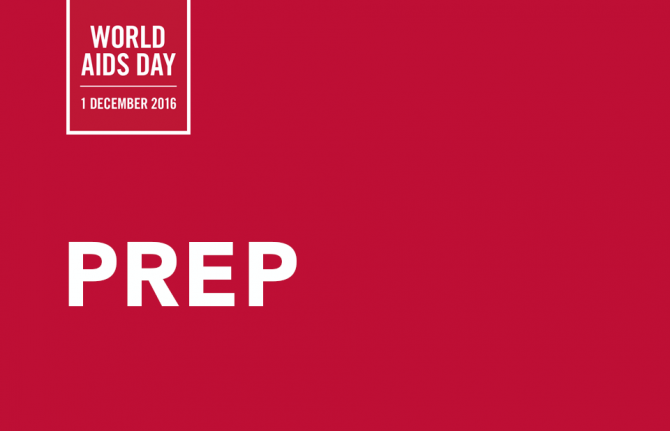
Update
Pre-exposure prophylaxis (PrEP)
31 October 2016
31 October 2016 31 October 2016Pre-exposure prophylaxis (PrEP) is the latest addition to efforts to expand combination prevention options for people at high risk of HIV infection. The number and scope of PrEP activities is increasing globally, while the scale and coverage outside the United States of America remain limited. In October 2016 an estimated 100 000 people were enrolled on PrEP, the majority of whom were in the United States. A significant but unquantifiable number of people are accessing PrEP through less regulated means, for example via the internet. The rapid establishment of government-regulated programmes will improve the monitoring and evaluation of PrEP’s use and its impact on the epidemic. Considerable additional effort will be needed to attain the new global target of reaching three million people at substantial risk of HIV infection with PrEP by 2020.
Hands up for #HIVprevention — World AIDS Day campaign

Update
Ukrainian Government to fully finance opioid substitution therapy
03 November 2016
03 November 2016 03 November 2016The Government of Ukraine has announced that in 2017 it will fully finance from its budget the national opioid substitution therapy programme for people who use drugs, a key population in Ukraine that is at higher risk of HIV infection. Approximately US$ 500 000 will be allocated to enable 8000 people who inject drugs to continue to access the therapy in 2017.
Ukraine has been providing opioid substitution therapy for 12 years with financial support from the Global Fund to Fight AIDS, Tuberculosis and Malaria and technical support from UNAIDS and through key partnerships with civil society organizations. People who use drugs with chronic opioid dependence and participate in the programme receive either methadone-based substitution therapy (tablets or liquid methadone) or buprenorphine tablets. Health-care workers provide daily support and counselling.
UNAIDS estimates there were 16 000 new HIV infections in 2015—220 000 people were living with HIV in Ukraine in the same year.
Quotes
"We have taken a major step forward to increase public funding of HIV and tuberculosis programmes in Ukraine. This is our ideological choice. It's not just because of Ukraine's international obligations. We do this primarily for those people who are faced with these serious diseases and need our help."
“UNAIDS welcomes the decision by the Ukrainian Government, which has the full support of all partners and the All-Ukrainian Network of People Living with HIV. Country ownership and shared responsibility are essential to end the AIDS epidemic as a public health threat.”
“For the first time in Ukraine's national AIDS response, its opioid substitution therapy programme will be financed in full from the state budget. This is a titanic achievement of activists, experts and opinion leaders from the international community, government and civil society.”
Region/country
Related


Update
First Lady of Malawi promotes understanding of the AIDS epidemic among Chinese students
01 November 2016
01 November 2016 01 November 2016The First Lady of Malawi and Vice-President of the Organisation of African First Ladies against HIV/AIDS (OAFLA), Gertrude Mutharika, has spoken to Chinese high school students about the impact of the AIDS epidemic on African women and children. The First Lady spoke at an event in Beijing, China, on 31 October celebrating the participation of the Affiliated High School of Beijing University in an ongoing campaign called China–Africa Hand in Hand: Chinese Youth’s Campaign for the Social Benefit of Africa.
Students from several high schools in Beijing and representatives of UNAIDS, the China–Africa Business Council (CABC), the China–Africa Development Fund and volunteer groups participated in the event.
The CABC and partners have established the Increasing Love for Decreasing AIDS Fund, which has raised US$ 200 000 for HIV programmes in eight African countries. High schools participating in the youth campaign are helping to collect donations for the fund. The campaign is also encouraging young people to join hands with their counterparts in Malawi and other African countries in order to build a brighter future together.
Quotes
“The vision of the Organisation of African First Ladies against HIV/AIDS is of an Africa free from HIV and maternal and child mortality, where women and children are empowered to enjoy equal opportunities. OAFLA believes that teenagers are the future of China–Africa relations and looks forward to more engagement with Chinese teenagers for the development and public welfare of Africa.”
“The Increasing Love for Decreasing AIDS Fund is striving to promote prevention of mother-to-child transmission of HIV and to contribute to achieving an AIDS-free generation. Through our campaign, students in China start to know better this beautiful continent, meanwhile also learning how to protect themselves from HIV and to join the global efforts to respond to it.”
“I am convinced that with more young people joining the movement, we can end the AIDS epidemic. We can reach our goal of creating an AIDS-free generation. This was called for by the First Ladies of China and Africa at the Johannesburg Summit in December 2015. I know it is achievable.”
Region/country


Update
Closing the diagnostics gap for HIV for young infants
25 October 2016
25 October 2016 25 October 2016To achieve the Fast-Track Targets and end the AIDS epidemic by 2030, new HIV infections among children must be eliminated. HIV can pass from mother to child during pregnancy, childbirth and breastfeeding, but with antiretroviral therapy mother-to-child transmission rates can fall to 5% or less.
The World Health Organization (WHO) promotes a comprehensive approach to preventing mother-to-child transmission of HIV. One important part of this strategy is to provide appropriate treatment, care and support to mothers living with HIV, their children and other family members.
Since 2005, owing to effective programmes that prevent mother-to-child transmission, the number of children born HIV-positive has dropped by about 70%. In 2015, around 1.4 million mothers living with HIV gave birth and 150 000 infants were infected with HIV globally. HIV-positive infants have their highest mortality in the first three months of life, so their HIV status must be diagnosed quickly in order that they can receive the treatment they need.
However, a serious diagnostics gap exists. Only 51% of infants exposed to HIV globally are tested by the time they are six weeks old, the age recommended by WHO. Half will never receive their results. Of those who do test positive and receive their results, only half are linked to care. So of the 150 000 babies born HIV-positive in 2015, only around half will be linked to care.
UNITAID is helping to close the diagnostics gap. Through its partners, UNITAID has invested more than US$ 300 million to widen availability to affordable, quality-assured diagnostic technologies in low- and middle-income countries. Crucially, UNITAID is making those tests available where people seek care, even in remote settings, to ensure that young patients quickly get the treatment they need.
Early infant diagnosis (EID) tests are suitable for infants, whereas rapid diagnostic tests are unsuitable for young infants, as a mother’s antibodies can be present in her child’s blood for up to 18 months after birth. UNITAID aims to make EID tests available for less than US$ 30. The test takes less than two hours to run, so infants can get same-day diagnosis and be linked immediately to care. This reduces the number of infants whose results are lost or delayed, and saves on the costs of later diagnosis.
With additional refinements, point-of-care testing of infants could further decrease infant mortality. UNITAID Operations Director Robert Matiru stresses the importance of regular testing. “Testing at birth can tell physicians if a baby was infected in utero,” he says. “But if a child is infected at birth, HIV seroconversion will not be detectable in the blood until weeks later. Re-testing at the recommended 6 weeks is essential.”
UNITAID currently has projects under way to make point-of-care EID and viral load tests available and affordable in 16 African countries. Innovative platforms, tailored to decentralized health settings, make it easy for health workers to carry out several types of tests. UNITAID funds operational research to check that each health solution is cost-effective, appropriate to the setting and scalable. The insights gained from this work in turn inform treatment guidelines, national plans and policies for preventing and treating HIV, and global HIV strategies, feeding back into a cycle of ever-more effective programmes.
Partners
Hands up for #HIVprevention — World AIDS Day campaign
Related

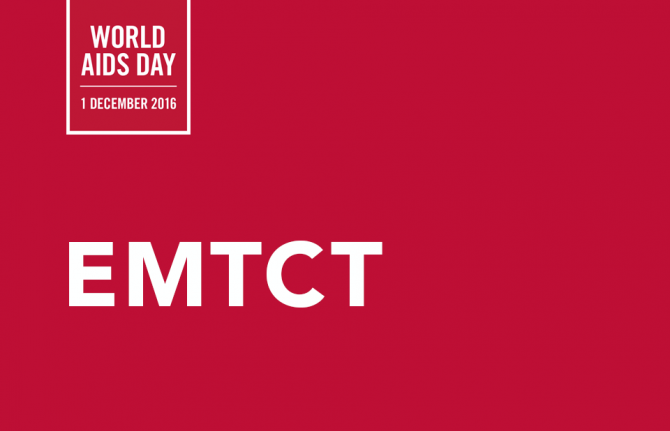
Update
Eliminating new HIV infections among children
24 October 2016
24 October 2016 24 October 2016The steady scale up and improvement of services to prevent mother-to-child transmission of HIV has reduced the annual number of new infections among children globally by 56% since 2010 and by 70% since 2000. Since 1995, an estimated 1.6 million new HIV infections among children have been averted due to the provision of antiretroviral medicines to women living with HIV during pregnancy or breastfeeding. The vast majority of these infections (1.3 million) were averted between 2010 and 2015. Complex challenges remain, however, to achieve the elimination of mother-to-child transmission of HIV.
Hands up for #HIVprevention — World AIDS Day campaign
Related

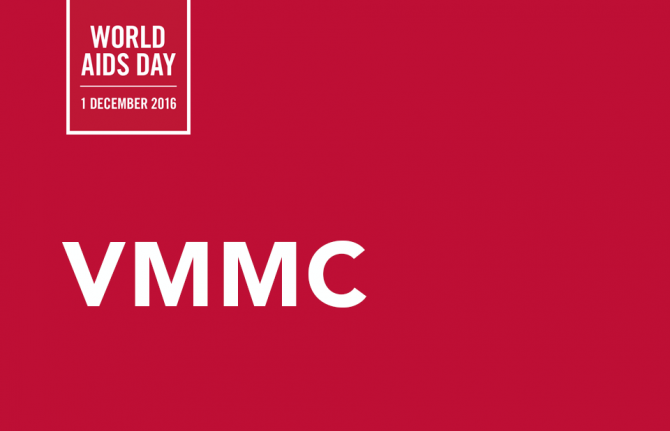
Update
Voluntary medical male circumcision
17 October 2016
17 October 2016 17 October 2016Voluntary medical male circumcision is a cost-effective, one-time intervention that provides lifelong partial protection against female-to-male HIV transmission. Modelling studies have suggested that achieving 80% circumcision prevalence among men aged 15 to 49 years by 2015—and then sustaining it—would avert 3.4 million HIV infections by 2025.
Since 2007, tremendous efforts have been made to scale up voluntary medical male circumcision in 14 priority countries in eastern and southern Africa that have high levels of HIV prevalence and low levels of male circumcision. By the end of 2015, nearly 11.6 million men in these countries had been medically circumcised.
Hands up for #HIVprevention — World AIDS Day campaign
Related

Update
UNAIDS Executive Director applauds Sweden’s excellent progress on 90–90–90 targets during IAPAC annual summit
14 October 2016
14 October 2016 14 October 2016Michel Sidibé, UNAIDS Executive Director, delivered the keynote address to the opening plenary of the International Association of Providers of AIDS Care (IAPAC) summit on 13 October in Geneva, Switzerland. Speakers at the summit, entitled Controlling the HIV Epidemic with Antiretrovirals: Leveraging Progress, Seizing Opportunities, discussed the implications of new research confirming the benefits of early antiretroviral therapy for all people living with HIV in order to save lives, reduce coinfections such as tuberculosis and prevent HIV transmission.
Mr Sidibé highlighted the strategies, emerging opportunities and political processes needed to achieve the 90–90–90 targets by 2020, which call for 90% of people living with HIV knowing their HIV status, 90% of people who know their HIV-positive status accessing treatment and 90% of people on treatment having suppressed viral loads. These are central to the Fast-Track response to ending AIDS by 2030.
During the summit, the Director of the Swedish National Institute of Public Health, Johan Carlson, presented the findings of a scientific publication that announced that Sweden was the first country to declare that it had reached the 90–90–90 targets, in 2015. Mr Carlson highlighted the factors that contributed to the success, including free access to quality HIV education, testing, treatment, care and support, overcoming stigma and discrimination against people at higher risk of HIV, including gay men and other men who have sex with men, sex workers and migrants, the protection of human rights and programme monitoring and evaluation.
Mr Sidibé congratulated Sweden for its impressive progress on the 90–90–90 targets and noted that other high-income countries, as well as many low- and middle-income countries, including Botswana, Brazil, Cambodia, Kenya, Malawi, Rwanda, Swaziland and Thailand, are also on track to achieve them.
Quotes
“Achieving 90–90–90 is about accelerating our efforts to keep people alive. If we are not saving lives, what is the point!”
“People living with HIV in Sweden report a high quality of life, but it is not just about treatment, but also about acceptance and integration. We must end stigma and discrimination against lesbian, gay, bisexual, transgender and intersex people, people who inject drugs and others who are at risk of HIV.”
"We need to look at how we turn words into deeds"
“It is important we translate 90–90–90 to all populations at risk.”
“Seeing who is missing in the last 10% is also important. We must address the social and cultural differences that exist.”
“This is not a game. This is life and death. 90–90–90 is absolutely realistic. The money needed from a macroeconomics level is equivalent to a rounding error.”
“South Africa cannot increase from 3.5 million to 7 million on HIV treatment without addressing the issues of health systems and social justice.”

